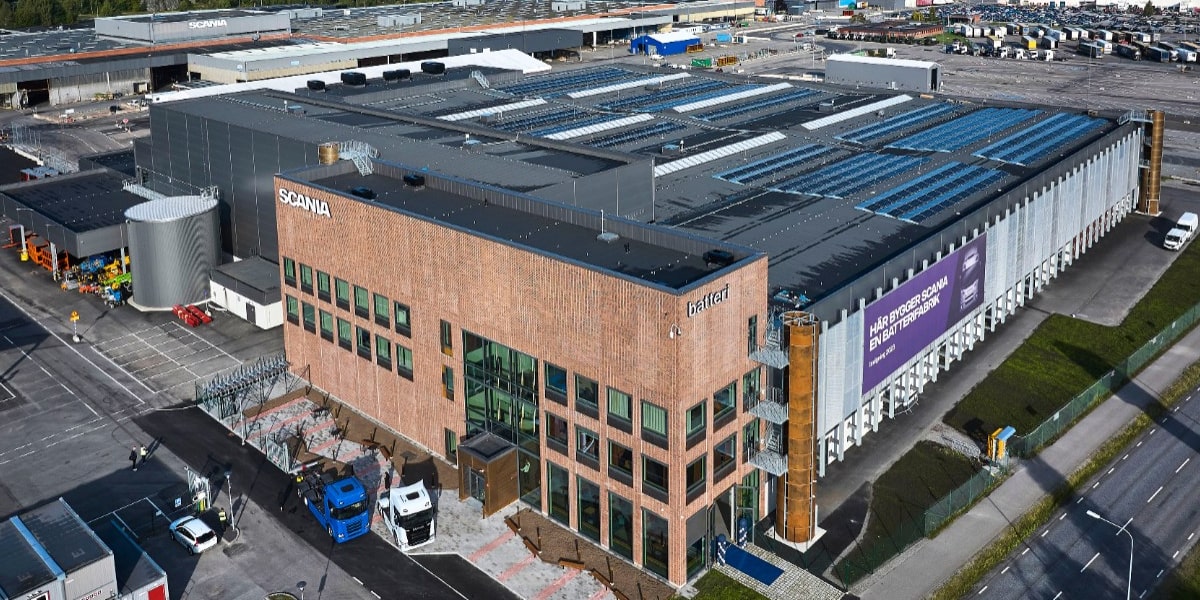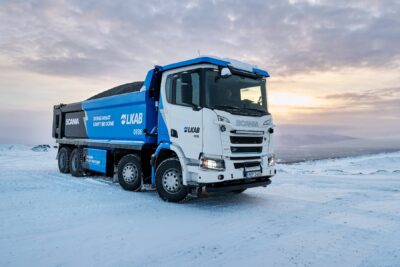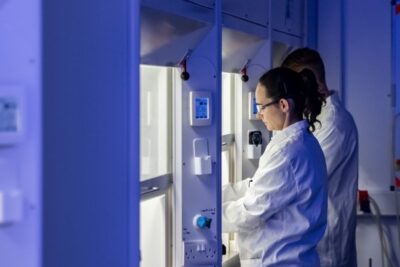Scania kicks off its own battery assembly in Sweden
Swedish Traton subsidiary Scania has started up its announced battery assembly plant next to its chassis production in Södertälje, Sweden. According to the manufacturer, the in-house battery assembly plant enables the series production of heavy premium electric vehicles.
Scania has been assembling the new battery cells produced by Northvolt in Skellefteå into battery packs for use in heavy electric trucks for regional transport here since 5 September. The Northvolt battery cells have been specially optimised for Scania’s needs; It is a prismatic cell with a nominal voltage of 3.6 volts and a capacity of 157 Ah.
The special feature of the robust electric truck cell: according to Marcus Holm, head of production and logistics at Scania, the self-assembled batteries are expected to last for 1.5 million kilometres – the lifetime of a truck. “Being premium means that we deliver solutions that are both of the highest quality and sustainable,” says Holm.
From Skellefteå in northern Sweden, the cells will be transported some 800 kilometres south to the Scania plant. The new 18,000-square-metre assembly plant in Södertälje, southwest of Stockholm, will employ 550 people, although Scania says the processes are “highly automated from goods receipt through production to delivery”. The plant, which will cost over one billion Swedish kronor (around 100 million euros at the conversion rate at the time), was announced back in 2020.
In June 2022, Scania also commissioned a new battery laboratory in Södertälje. The lab and assembly are expected to help the Traton subsidiary reach its self-imposed target of 50 per cent sales of electric vehicles in 2030.
“I am extremely proud of all colleagues who have put their hearts and minds into this. At Scania, we have made it our purpose to drive the shift towards a sustainable transport system,” said Christian Levin, President and CEO of Scania and the entire Traton Group. “With the battery assembly in operations we have one of the key enablers in place to accelerate the shift to electrification.”





0 Comments